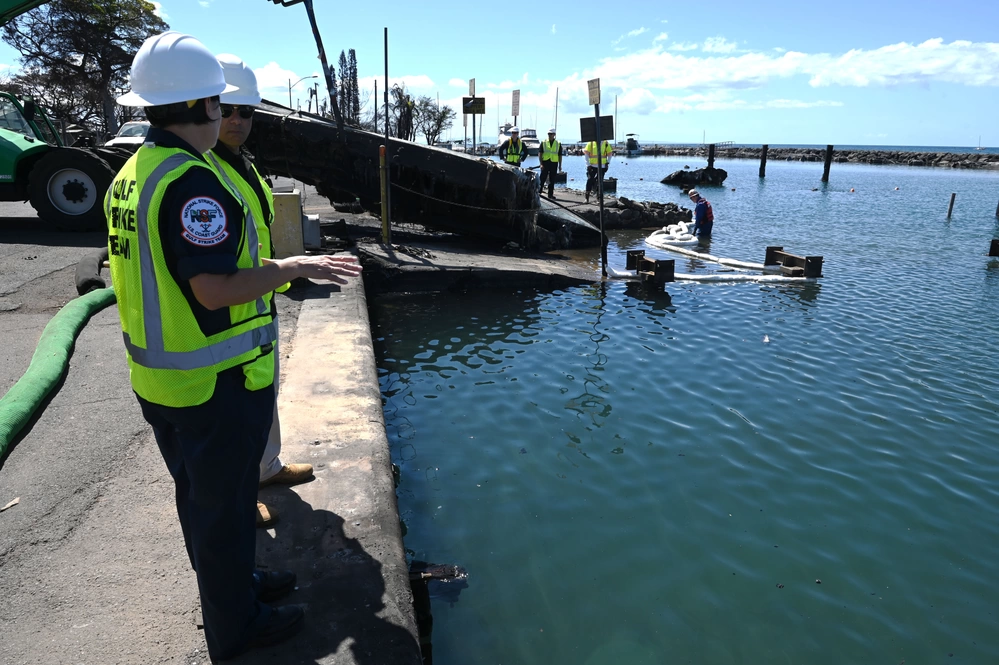US Coast Guard transitions to next phase in Maui wildfire recovery

State and federal responders with the US Coast Guard unified command began the pollution and hazardous material removal portion of response following the Aug. 8 wildfire in Lahaina.
The Western Maui Wildfire Emergency Support Function Unified Command is comprised of the US Coast Guard, Hawai’i Department of Health, and the Hawaii Department of Land and Natural Resources Division of Boating and Ocean Recreation.
All operations continue to support the mission to restore Lahaina Harbor and surrounding waterways.

The Unified Command and the primary contractor, Global Diving & Salvage, have removed, to date, over 2100 gallons of product from vessels in the vicinity of Lahaina Harbor. The contracted workers surveyed the harbor and are continually refining a plan to remove the hazardous materials and submerged vessels, according to a Coast Guard update.
The vessels, when removed, will be relocated to a nearby parking lot designating as a temporary staging area. Vessel stakeholders will be informed via the Harbor Coordination Group when their vessel is removed to coordinate retrieval of property. The State of Hawaiʻi DLNR-DOBOR is the primary contact to work with the stakeholders for vessel adjudication. The ESF #10 Unified Command is working with US Army Corps of Engineers for final disposition of the vessels.
The general order for vessel pollution mitigation and removal operations will be executed in a phased approach. Due to the uncertain nature of removal operations, some phases may occur simultaneously.
Phase 0 – Pre-Operations: This initial phase of operations has consisted of the search for sunken, derelict, or displaced vessels, along with associated marine debris. The Unified Command has been working to identify and contact vessel owners to gather information about each vessel.
Phase 1 – Hazard Mitigation and Consultation: This phase includes equipment staging, area assessments for safety and pollution concerns, and consultation with local, state, and federal partners to create and formalize operational plans for the next phase. Cultural and archeological monitors are in place to ensure operations are conducted respectfully. Monitors will continue to advise on cultural and archeological areas throughout all phases of the operation.
Phase 2 – Removal Operations: This is the physical recovery phase. Operations will include pollution mitigation and recovery, and removal of vessels and debris from the water to pre-designated staging areas. The Unified Command will closely coordinate with local authorities to facilitate access to impacted vessels for owners, operators, assessors, and other stakeholders.
Phase 3 – Closeout: The final phase of vessel pollution mitigation and removal operations. The Unified Command, with the concurrence of local, state, and federal partners, will determine that the mission assignment has been completed.
The Unified Command has created a Harbor Coordination Group to communicate with owners and operators of impacted vessels. Vessel owners and operators can contact the Harbor Coordination Group at D14-DG-SH-SecHono-MTSRU@uscg.mil.








